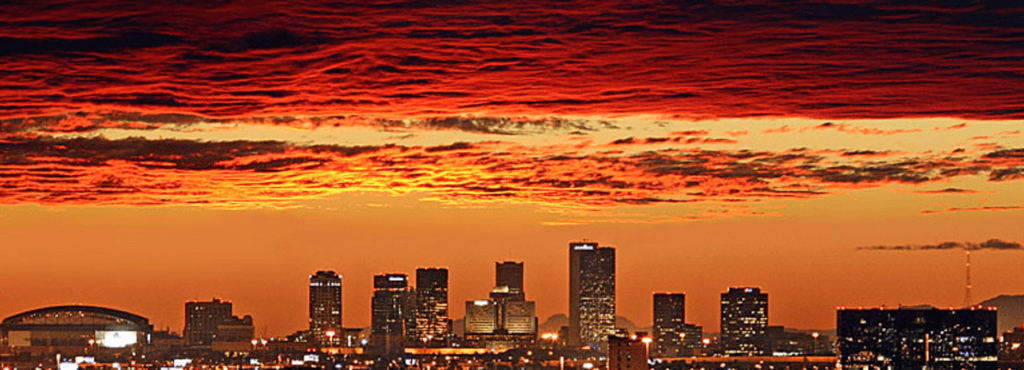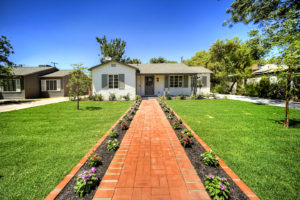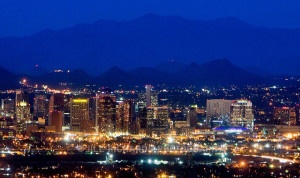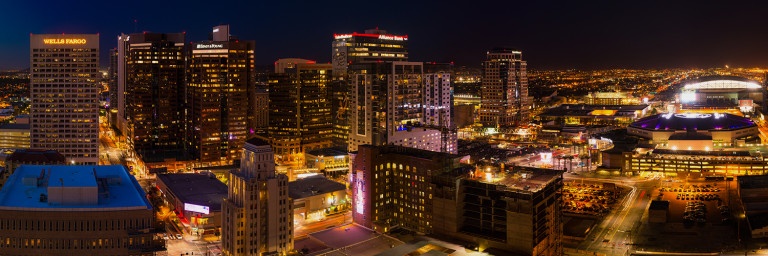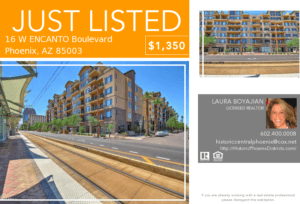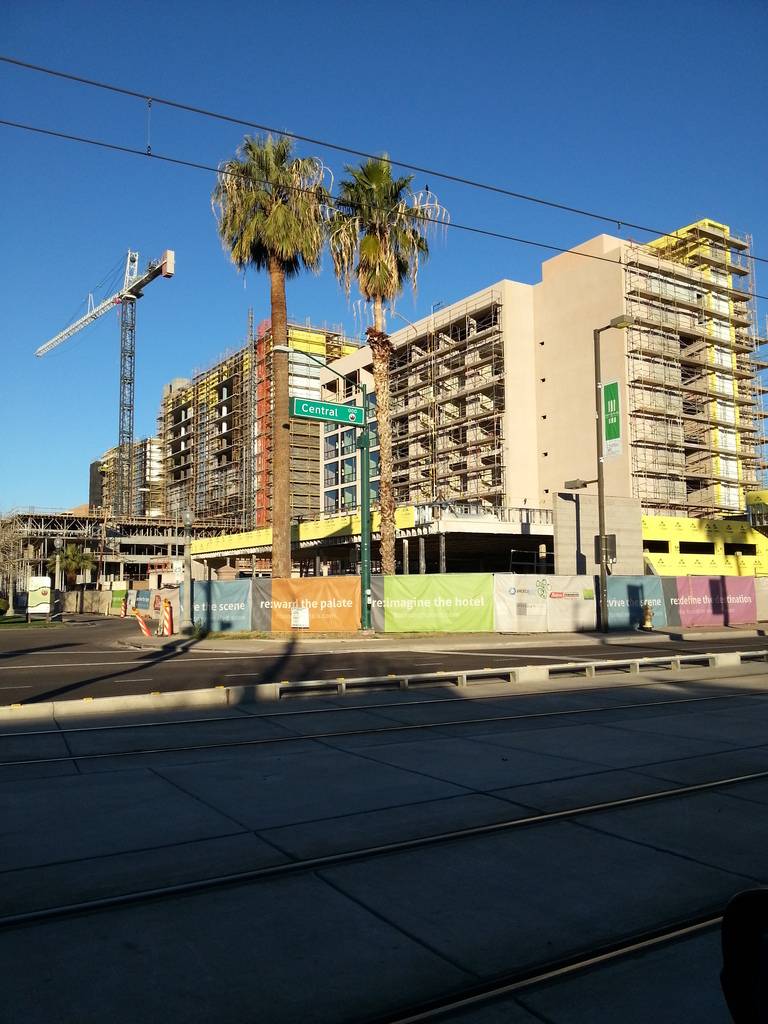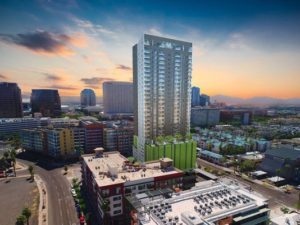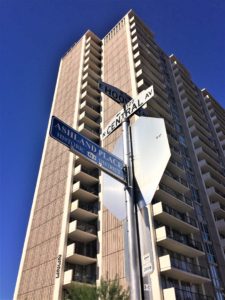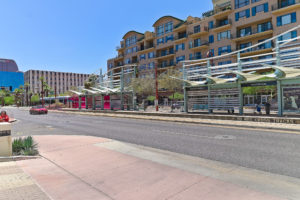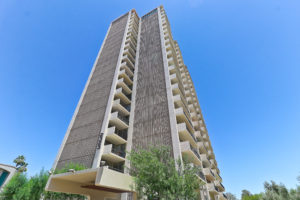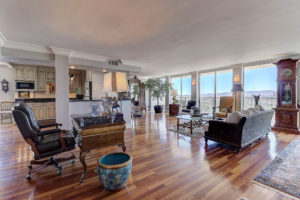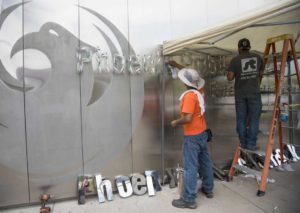Phoenix, AZ Urban Lifestyle
Phoenix homebuyers who are looking for something charming, quaint & vibrant in a convenient location find themselves exploring, visiting and moving into the historic communities in central and midtown Phoenix.
It’s reminiscent of simpler times, like old Americana, where you can walk your dog along the tree-lined streets and wave to your neighbors sitting out on their front porch. It’s a place where you know your neighbor’s names.
Location Attraction
The prime central location, in the heart of the historic district, is where you are just steps from every imaginable cultural experience including the Phoenix Art Museum, the world renowned Heard Museum, Arizona Science Center, Children’s Museum of Phoenix, Phoenix Symphony Hall, Arizona Opera, Ballet Arizona, some truly wonderful locally-owned shops & eateries, and nearby sporting events with the Arizona Diamondbacks, Phoenix Suns, Phoenix Mercury, and Arizona Rattlers.
Location Proximity
Also, proximity to hospitals, medical & business offices, colleges, banks, and the like. Not to mention the Roosevelt Row which has been ranked one of the top art districts in the country (be sure to check out First Fridays when thousands of people fill the streets), the Encanto Enchanted Island Amusement Park, and the Valley Metro Light Rail, which is ideal for rapid transit to downtown theaters, hotels, municipal services, the Arizona State University downtown campus, concert venues, and even to Sky Harbor Int’l Airport.
Also so close to great schools such as St. Mary’s, Brophy College Prep, Xavier College Prep, and more. Easy access to several highways makes it easy to get around the Valley in minutes.
Whether you’re looking to buy a single-family home in Phoenix, AZ, a Historic Phoenix home, or, If the condo lifestyle is something you’re considering, or, if it’s all you can afford now, please give me a call for free, no obligation consultation. I specialize and LOVE working with first-time homebuyers and am am FIRM believer that THERE IS NO SUCH THING AS A STUPID QUESTION. I’ll take all the time with you that you need!
Search for all historic Phoenix and Metro Phoenix Homes For Sale
- Alvarado Historic District Homes For Sale
- Arcadia Historic Neighborhood Homes For Sale
- Ashland Place Historic District Homes For Sale
- Biltmore Corridor Neighborhood Homes For Sale
- Brentwood Historic District Homes For Sale
- Camelback Corridor Homes For Sale
- Campus Vista Historic District Homes For Sale
- Central Avenue Estates & Central Corridor Homes For Sale
- Cheery Lynn Historic District Homes For Sale
- Coronado Historic District Homes For Sale
- Country Club Manor Historic District Homes For Sale
- Country Club Park Historic District Homes For Sale
- Del Norte Historic District Homes For Sale
- Earll Place Historic District Homes For Sale
- East Alvarado Historic District Homes For Sale
- Encanto Manor Historic District Homes For Sale
- Encanto Vista Historic District Homes For Sale
- Encanto-Palmcroft Historic District Homes For Sale
- FQ Story Historic District Homes For Sale
- Fairview Place Historic District Homes For Sale
- Garfield Historic District Homes For Sale
- Idylwilde Historic District Homes For Sale
- La Hacienda Historic District Homes For Sale
- Los Olivos Historic District Homes For Sale
- Luxury Historic Homes and Areas Homes For Sale
- Margarita Place Historic District Homes For Sale
- Medlock Place Historic District Homes For Sale
- North Central Corridor Homes For Sale
- North Encanto Historic District Homes For Sale
- Oakland Historic District Homes For Sale
- Phoenix Homesteads Historic District Homes For Sale
- Pierson Place Historic District Homes For Sale
- Roosevelt Historic District Homes For Sale
- Roosevelt Park Historic Districts Homes For Sale
- Victoria Place Historic District Homes For Sale
- Villa Verde Historic District Homes For Sale
- Willo Historic District Homes For Sale
- Windsor Square Historic District Homes For Sale
- Woodland Historic District Homes For Sale
- Woodlea Historic District Homes For Sale
- Yaple Park Historic District Homes For Sale
Surrounding Suburban Neighborhoods and Communities Real Estate For Sale
-
- Carefree, Arizona Real Estate For Sale
- Cave Creek, Arizona Real Estate For Sale
- Chandler, AZ Real Estate For Sale
- Desert Ridge Real Estate For Sale
- Gilbert, AZ Real Estate For Sale
- Glendale Historic Districts Homes For Sale
- Mesa Historic Homes For Sale
- Paradise Valley Luxury Homes For Sale
- Paradise Valley Historic Homes For Sale
- Peoria, AZ Real Estate For Sale
- Scottsdale Condominiums For Sale
- Scottsdale Historic Homes For Sale
- Scottsdale Homes For Sale Up to $350,000
- Scottsdale Homes For Sale $350,000 -1 Million
- Scottsdale Luxury Homes For Sale – 1 Million and up
- Scottsdale Lofts For Sale
- Scottsdale Patio Homes & Townhouses For Sale
- Tempe Historic Homes For Sale
